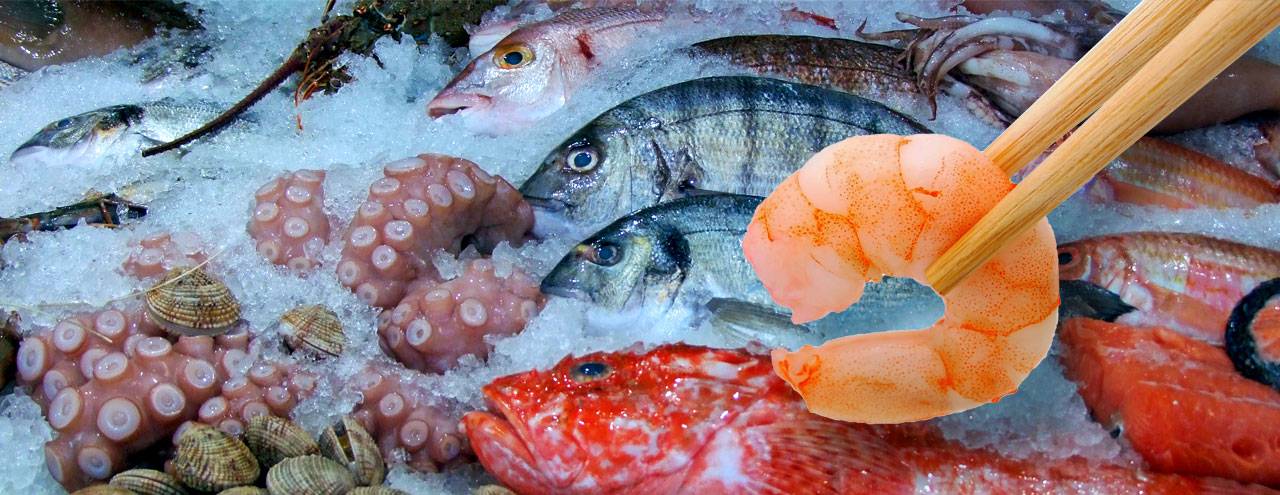The feeling many people associate with food is pleasure. But even if you’re not particularly fond of eating, at least you don’t see it as harmful. Unless… you’ve experienced a more serious case of food poisoning.
We’re taking food for granted, but it does have a history of turning aggressive on us, especially if we don’t take the time to learn how to handle it. Back when people used to hunt and gather food, they probably had a lot of problems with consuming poisonous plants. Today at least we don’t have to worry about that because most food that we purchase goes through some type of governmental control and is subject to strict food production regulations. But even so, about 48 million people get sick each year from problems related to food.
Some of the most dangerous among potential food poisoners are seafood products. Depending on where you look for information, you may find out that seafood is extremely beneficial and should be a part of a healthy diet, or that it’s harmful and should be avoided. We at FreezerLabels.net believe truth is somewhere in between. The main principle of a healthy lifestyle is living in moderation. So, fish that is known to be a rich source of omega-3 fatty acids should certainly be on every meat-eating person’s weekly menu. But that should come with some safety measures.
Potential Harmful Effects of Seafood Consumption
Though we heard time and again that omega-3 fatty acids are excellent for regulating blood clotting, reducing tissue inflammation, reducing depression, improving eye health, etc., there’s a problem with intaking all the necessary omega-3 from seafood. For one, a lot of fish is contaminated with mercury, so high levels of fish consumption will lead to high consumption of mercury.
According to an analysis by the Environmental Working Group many frequently consumed types of fish have very low levels of omega-3 fatty acids. Also, many commonly used fish are harmful to certain population groups (pregnant women, lighter women, older people, children, etc.) because of the level of mercury. Their recommendation is to use salmon but steer away from farmed salmon, as it usually presents an environmental risk. We can conclude that it’s a little discouraging to be left with a very limited choice of fish from a seeming abundance of “fish in the sea”.
How to Protect Yourself
Rule number one when it comes to buying seafood, or any food for that matter, is to pay attention to labels. Though there is a lot of misuse and greenwashing practices related to seafood labeling, labels are still the best thing you have that will give you some information about the product and the producer.
You’ll be able to see if the fish was caught wild, if the producers is local (in which case you can more easily obtain information about their production practices), if it was imported from overseas, etc. You’ll also be able to find out information about the seafood’s nutrients.
Since producers who use bad production practices (such as fish farming, where fish is kept in its own filth) will not outright admit it on the label, this is something you will either have to deduce from the information on the label, or do some further research about the manufacturer.
You should also be well informed about types of fish that may contain high levels of mercury. According to EWG, those are: canned albacore tuna, halibut, king mackerel, orange roughy, seabass, shark, swordfish, tilefish, etc.
Some of the safest seafood you can eat are: anchovies, herring, mussels, salmon, sardines, shad, trout.
Once you’ve made an informed choice on which seafood product to purchase, it is up to you to store and handle it properly.
Safe Seafood Storage Tips
As with all food, but especially with meat, eggs and seafood, it is important to keep all utensils and food preparation area clean. Make sure raw seafood doesn’t get into contact with other foods and objects, and when you’re done handling seafood, wash your hands thoroughly. For a detailed guide to safe seafood handling, take a look at the Food and Drug Administration guide to selecting and serving fresh and frozen seafood safely.
We’ve also prepared a sweet little document for all fans of seafood. It’s a summary of valuable tips on how to buy and store seafood safely. If fish and shellfish are frequently on your menu, we recommend you print this graphic out and keep it taped to your fridge.
Embed this infographic on your website:

Embed this infographic on your website:

